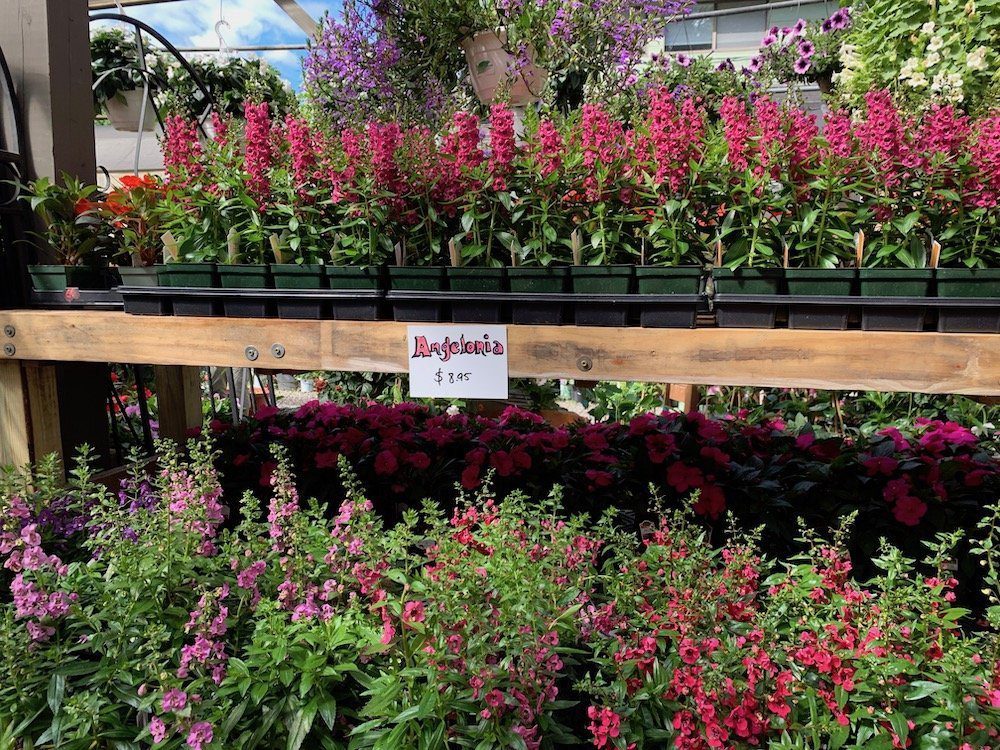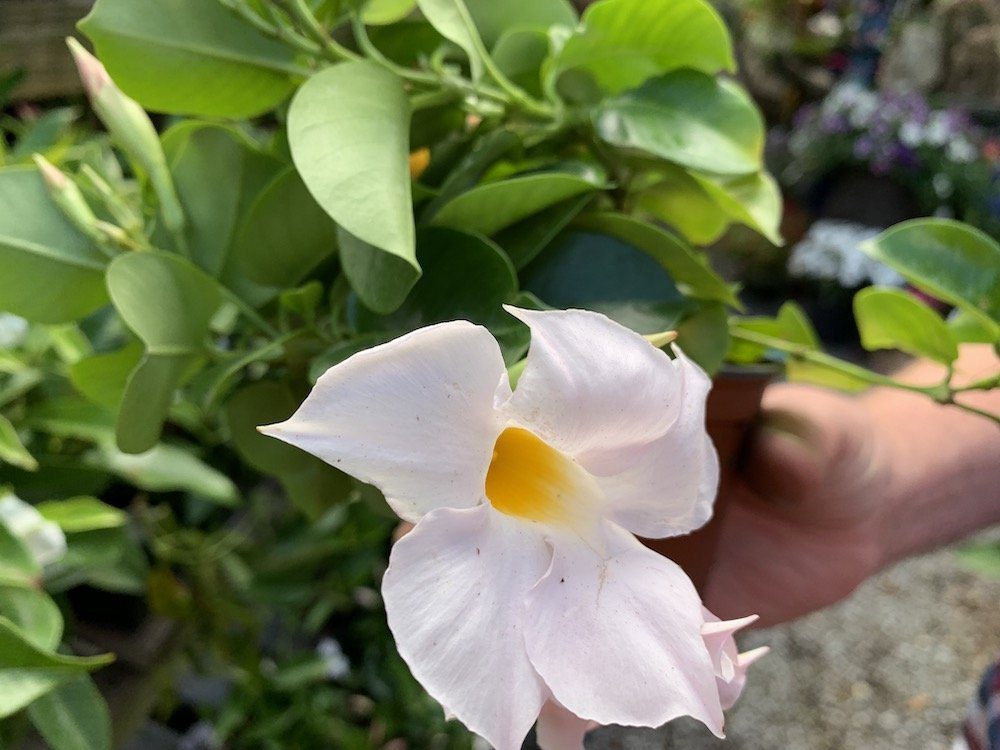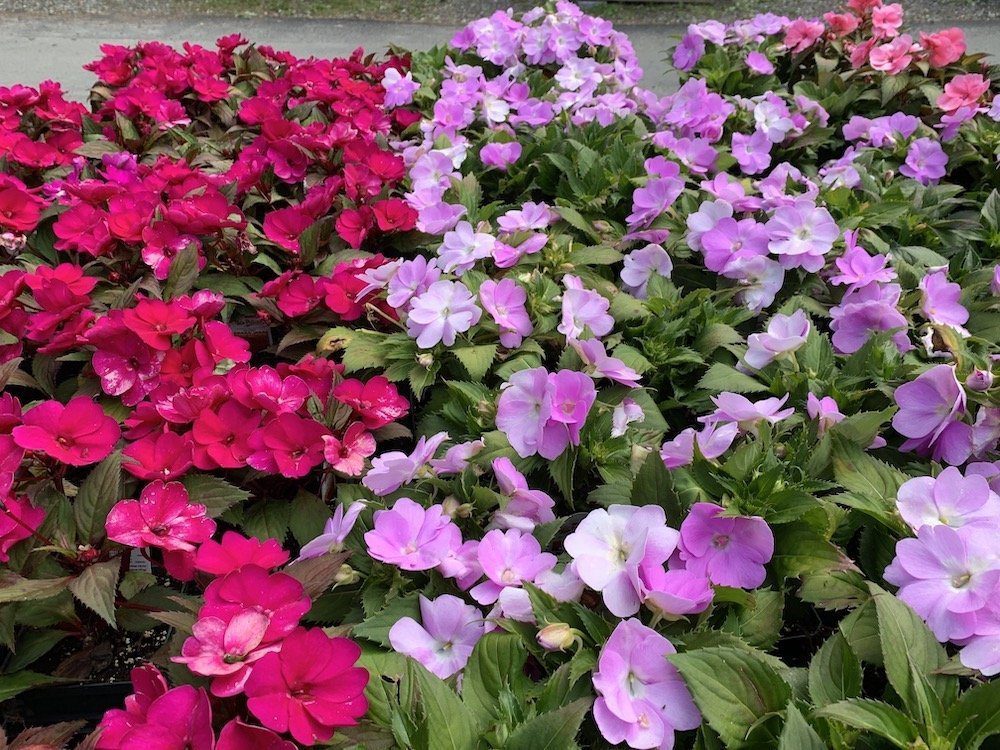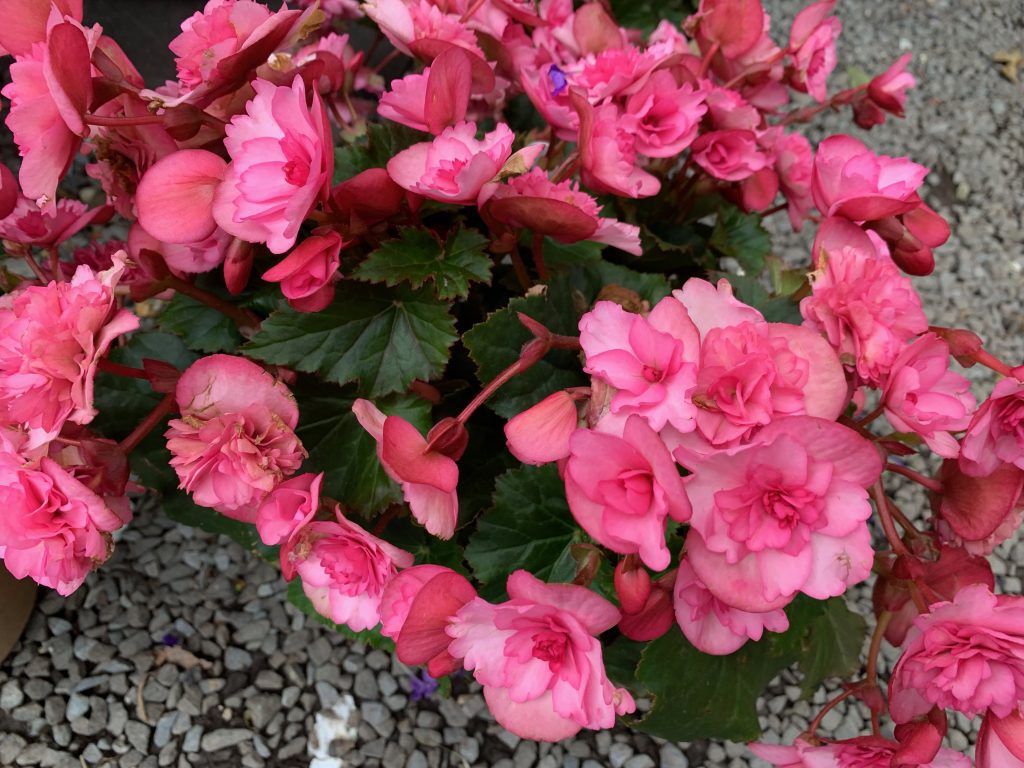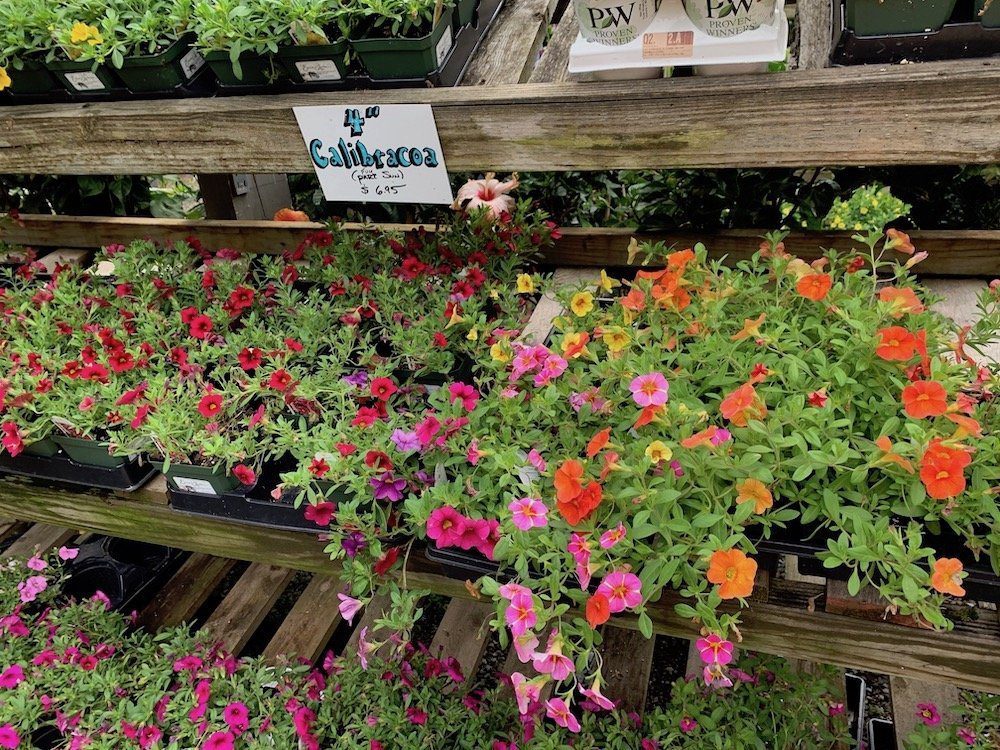Top 10 Vibrant Annuals to Brighten Your Garden All Season Long
By Jill Brooke
In the town of Bedford, home to many privacy-seeking celebrities and stalwart matriarchs, there is one man who is the go-to guy for anything regarding gardening.
Myles Brown is his name and he runs the Perennial Gardens garden center in this New York hamlet that is home to Martha Stewart, Blake Lively and Ryan Reynolds, Glenn Close, Catherine Zeta-Jones and Michael Douglas.
It is a community that values the land. A discerning group, they want their begonias to be bright and fluffy and their David Austin roses to climb stone walls.
Brown, originally from Australia, has been on the job for decades, cultivating an expertise that earns the respect of many. He’s like a mad scientist poring over seed catalogs, experimenting with new breeds and testing products. Which is why we went to him to ask for his Top Ten Annuals For A Garden That Blooms With Color!

Here were his selections. But please note that for flowers to bloom with such bursts of color, it requires regular feeding. They’re working hard and get hungry. Feed at least twice a month on average. Miracle-Gro and Espoma products really work. It now is available so it can attach directly to a hose. The following are designed to be very low-maintenance flowers – but that doesn’t mean no maintenance. Enjoy.
Some time zones have sun nearly all year which makes these annuals a friend all year. But other climates may have to wait to summer. Either way, always good to know these beautiful varieties.
1) The Perky Orchid-Like Angelonia
These aim to please flowers stand up to attention, lining up like loyal soldiers in your garden.
The tiny flecks of orchid-like flowers that surround the flower’s spike are anything but delicate. “It tolerates all types of weather like a champ,” says Brown. That includes blazing heat, blustery winds and excess rainfall.
Often used for walkways or the front edges of borders. Angelonias will add that pop of color when perennials short-lived blooms go dormant and turn to green. I put them in front of my peonies.
Also, angelonias are fantastic for window boxes and planters. Their tall structure are such a great balance to shorter blooms.
Care – Requires 6 to 8 hours of direct sun. Blessedly, these colorful pleasers tolerate almost any soil and will be forgiving in dry spells. However, water two or three times a week to ensure longevity and optimal results.
Bonus: Not prone to insect or disease problems and they are deer resistant. Don’t need to be dead-headed but an occasional trimming makes it look better. Forgiving in all weather conditions.
Favorite Variety: Wedgewood Blue.
2) The Highly Versatile Lobularia
Because of breeding, Lobularia comes in all sizes making it so versatile. It’s like the character actor for a play – can be anything. There are long and tidy varieties with hairy oblong-oval leaves for planters as well as short stout flowers that have dense clusters of spidery tiny white-petaled flowers. “They look very much like old-fashioned alyssum, but less finicky,” says Brown. “You can leave them alone and it will grow all summer.”
It also is one of the easiest annuals to grow. It spreads mounds of well-branched stems and grows typically from 2-6 inches tall to 12 inches wide. Of course, unlike alyssum, you have to buy these as cuttings but it’s worth it.
A great border option, lobularia’s penchant for spreading good cheer and flowers makes them popular for pots and hanging baskets.
Care: Requires watering twice a week – Prefers sun to part shade. Although this plant is Mr. Dependable, lightly trim the leggy stems and spent flowers. It will soon grow back.
Bonus: Not prone to insect or disease problems and they are deer resistant. Smells great and covers your bed with a blanket of pillowy flowers.
Favorite Variety: Snow Stream
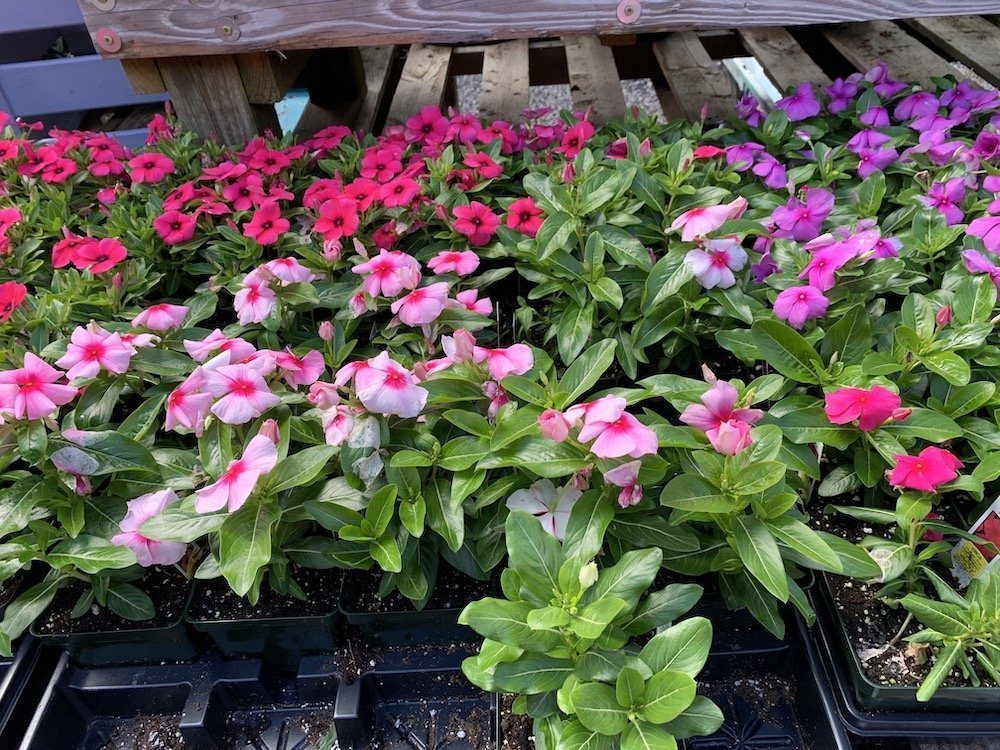
3) Strong and Sturdy Vinca
Vinca could be nicknamed invincible.
“This plant is strong and sturdy,” says Brown, noting that the California highway department chose this breed for its reliability and endurance.
Annual vincas require lots of sunshine. (It is not to be confused with a perennial ground cover that is for shade). Their tiny parasol like flowers explode with color and are a great addition to any garden from early summer till fall.
Use it to create a massive flower show anywhere you need some pop. Also great in planters or window boxes since now available in an array of pleasing colors including pink, magenta, lavender, white and coral. Coral is the hot color this season.
Care: Thankfully it is drought tolerant. Water whenever the top inch of the soil feels dry to the touch. Don’t overwater because susceptible to root rot. Plant in full sun 6 inches apart. Grows 10-14 inches. Great for hot sunny places. Deer resistant.
Bonus: Looks great in clusters.
Favorite: New Tattoo Series – great colors, big flowers. Coral and salmon colors popular.
4) Climbing and Clustering Mandevilla
Brown uses it as an annual, because it is really a tropical plant. “There are climbing and clustering Mandevilla and I like them all,” he says. “The climbing ones can grow a foot in a week.”
The mandevilla’s idea of playing in the outdoors is to climb anything it can from fences to arbors.
Care: The plant doesn’t like salty conditions so those lucky enough to have beachfront properties, this isn’t for you. But for everyone else, it’s a fun addition. It’s very tolerant of most soil types with good drainage. Make sure you mulch to retain soil moisture. This plant will thrive with weekly watering and isn’t fussy. Very low-maintenance.
Bonus: Not prone to insect or disease problems. Deer resistant. Many varieties. Grows quickly.
Favorite: Alice Dupont
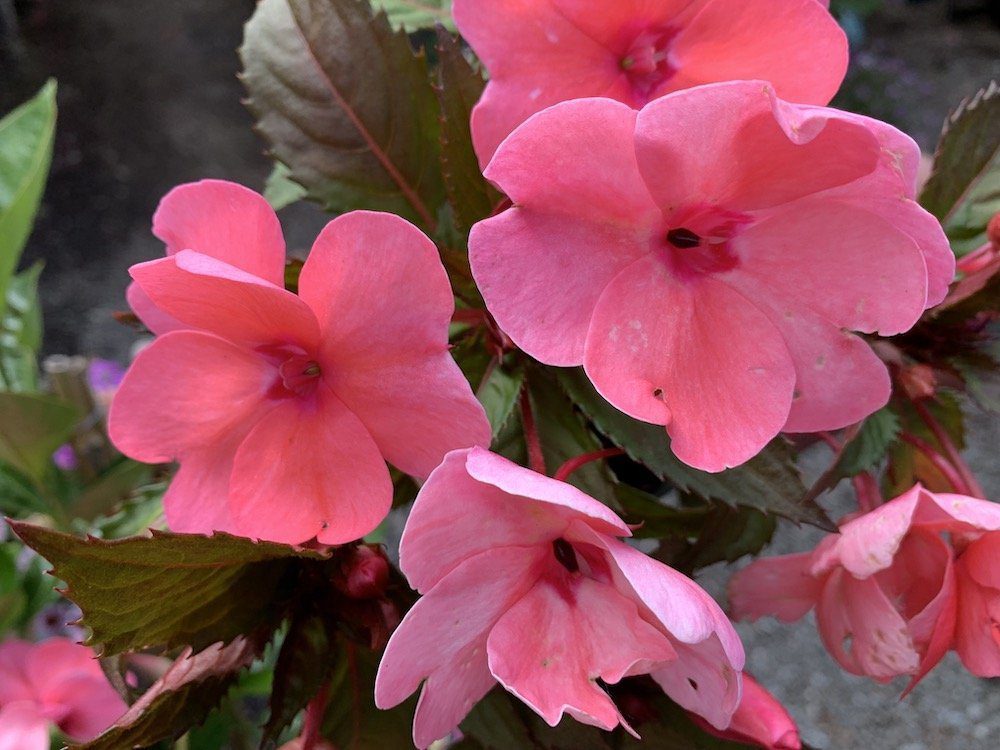
5) Sun-Loving SunPatiens
These babies like the sun. “They produce massive amounts of color,” says Brown. They are another alternative to enhance the garden. Sometimes when you plant them, flowers appear to wilt. They need to get comfortable, so don’t despair. Water well and they will normally revive within 24 hours.
As with most annuals, it’s not a bad idea to plant them with a bit of slow-release fertilizer.
Care: Water whenever the surface becomes dry. Let old flowers age gracefully. As the Beatles sang, “Let it be.” New flowers leapfrog over the older ones and everyone gets along. Oh and don’t try to cut back to control or boost size. These flowers don’t like it and won’t respond well. They like the size they are. They are not deer resistant. Use deer spray.
Bonus: No dead-heading. Not prone to insect or disease problems. These showy five petal flowers also produce nectar that attracts butterflies.
Favorite: Compact White
6) New Guinea Impatiens
One of the few annuals that offer color in shady spots. Is content to contemplate life in darkness with little light. Although it tolerates full shade, a little sun is appreciated for better blooms.
“They look great in mixed colors or in solid white,” says Brown. “We use a lot of whites to mix with all the colors and it makes a lot of impact.”
Care: Water frequently to maintain moist soil. Use fertilizer ever two weeks.
Bonus: Very few shade plants spring into color for extended amounts of time.
Favorite: Sonic Series – Light Lavender
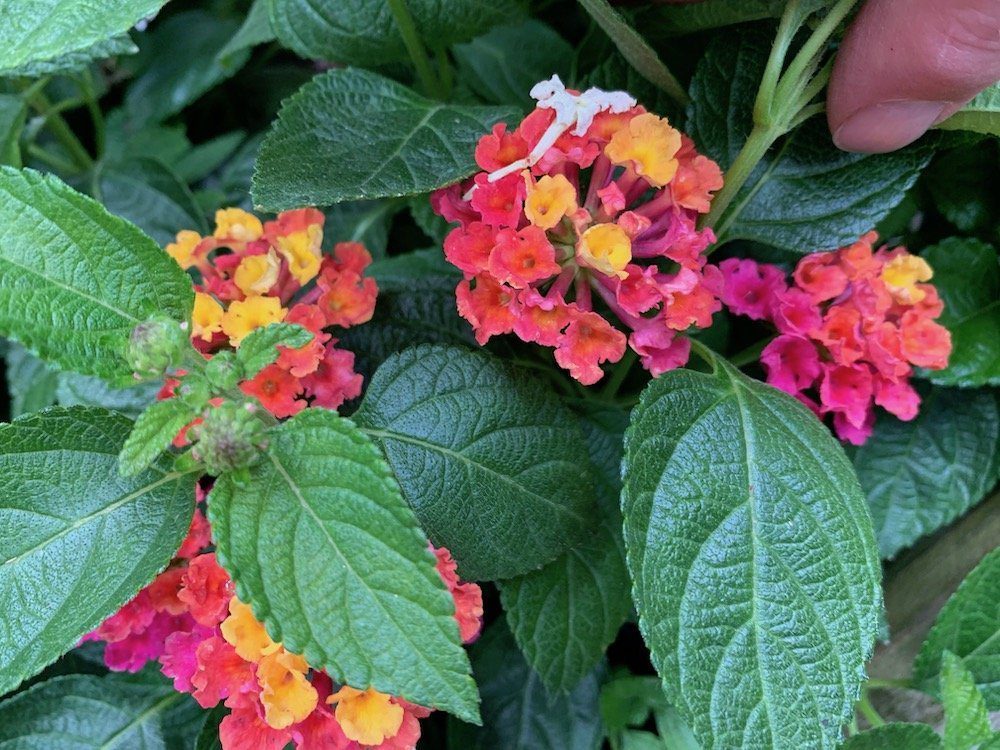
7) The Multicultural Lantana
A little smelly – though some consider it a citrus scent – this flower is appealing for its multiculturalism. It’s a swirl of colors all in one – often in orange and yellow shades – and the branches spill over nicely from hanging pots or planters.
“Because of sun, the peach will get a little bleached out so go for bolder colors,” suggests Brown.
Care: Likes full sun. Although these plants are tolerant of many soil conditions, it prefers slightly acidic soil.
Bonus: In a solid-colored planter, these add pizzazz from their unique cluster of color. Being plants that attract butterflies, they are a go-to plant for butterfly gardens and also attract hummingbirds.
Favorite: Rose Sunrise and Lucky Series Lavender
8) Indoor and Outdoor Begonias
Here’s a plant that can be enjoyed both indoors and outdoors. Its fluffy flowers come in a range of colors. Make sure you clip the dead flowers regularly.
“It has such a huge family,” says Brown, noting that there are many varieties of begonia to play with. “It’s so versatile to both sun or shade.”
Use Tuberous begonias for planters for its tendency to lean over an edge, and fibrous rooted begonias for flower beds. In the home, your pot should be the same size as the plant to prevent too much soil, which can become soggy. Some people put pebbles on the bottom for better drainage.
Care: Prefers soft light or partial shade. Requires pinching back regularly. Feeding should be applied around the base and not directly on plants. Leaves are tender. They don’t like to get their feet wet and are susceptible to rot.
Bonus: Versatility. Depending on the variety, shade or sun, indoors or outdoors.
Favorite: Wax Begonia Top Hat Series. Begonia Iconia Champagne and Sunrise
9) The Calibracoa Annual
These pretty plants are showy. While they can be planted in a garden bed, they prefer star treatment in planters, window boxes or hanging baskets where they enthusiastically drape and trail as much as two feet. Because of their popularity, new hybrids have been introduced to satisfy the artist in you. Aside from solid colors, calibrachoas also are available in striped varieties, two-toned shades and other interesting patterns that delight any gardener.
“They are like traditional petunias but without the deadheading since it’s a self-cleaning plant,” adds Brown.
Care: Although they may play a starring role in a garden, they are actually low-maintenance. They like sunlight, regular watering and food. Sensitive to low amounts of nitrogen, calibrachoa turns yellow when it needs to be fed.
Bonus: Some plants can extend two feet in just weeks. The variety of colors is dazzling. Like a box of crayons just for you.
Favorite: Double Rose Chai – Buttery yellow with a raspberry interior.
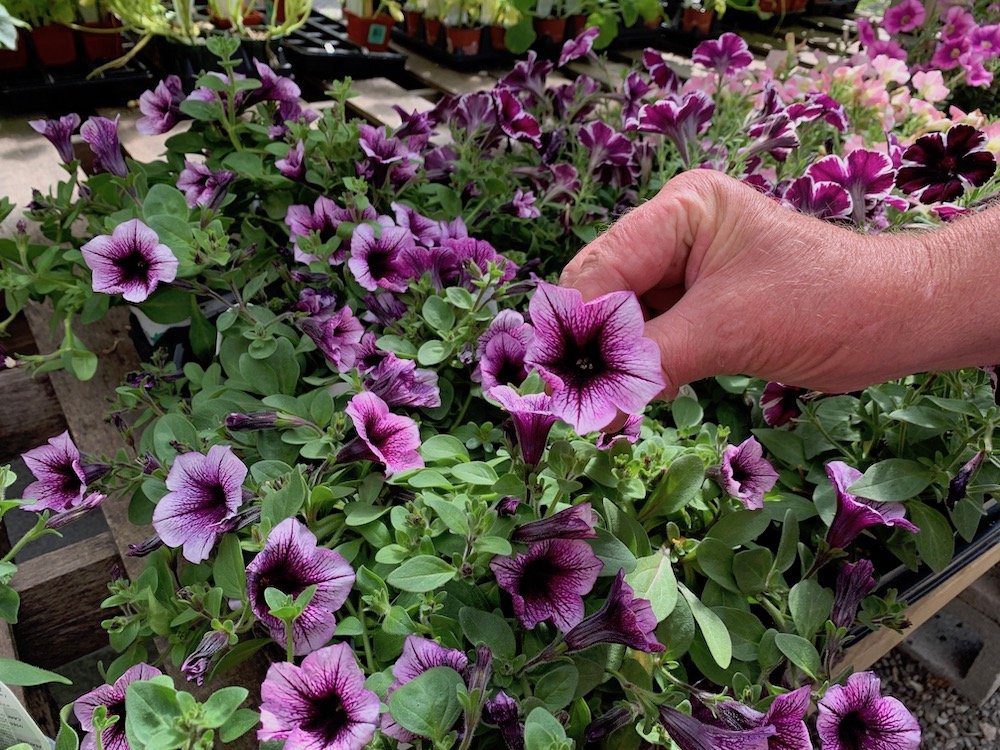
10) The Supertunia Annual
We all love petunias and this hybrid has been bred for more massive blooms. Here’s a flower where fine lines are absolutely embraced because it adds to the beauty of the flower.
But this is a plant that also cares about food. Needs fertilizer at least twice a month.
“All petunias want a full day of the sun – at least four to six hours – because the more shade they are planted in, the fewer flowers they can produce,” says Brown. Sun promotes growth thus producing more flowers.
Care: Heat and drought tolerant. Dead-heading not necessary. Best in containers, planters and window boxes. Full sun and will grow 6 to 12 inches tall. This variety needs at least six hours of hot sun from 10 am. to 4 pm. for best results.
Bonus: They’re very cute and colorful. A good companion to many annual flowers.
Favorite: Supertunia Bordeaux with it’s lavender and purple colors.
In Conclusion
Although in some areas, annuals can morph into perennials, most of these are bred to live for only one summer. It’s worth it though. Colorful blooms brighten your spirits and inspire creativity. They also teach you that some flowers, like some relationships, are meant to be beautiful for only short periods of time.

